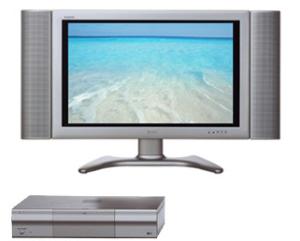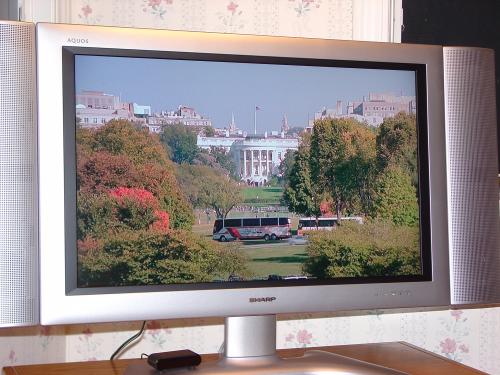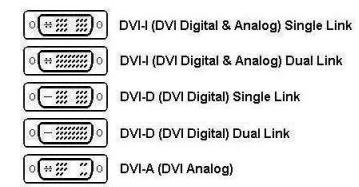|
|||||||||
|
Introduction Flat-panel TVs are the current rage. Although Plasma Screen TVs came out initially, LCD TVs have been in use with computers for some time, and now, LCD has hit the HDTV market. The maximum size for LCD HDTVs is not as big as for plasmas, but they will catch up eventually. The model reviewed here, the LC-30HV4U, is Sharp's 30" version, one size down from their biggest unit, the 37" LC-37HV4U. Both are 16:9 HDTVs. Plasma TVs and LCD TVs compete with one another, and they each have distinct advantages and disadvantages: (1) Burn-in on Plasma TVs. When watching TV programs where the channel logo sits in the bottom right corner, stationary, for extended lengths of time, you can eventually see the logo even when not watching that channel. The logo has "burned in". It is a particular problem with Plasma TVs, but does not occur with LCD TVs. In part, this is due to the fact that plasma pixels are illuminated by voltage exciting plasma gasses inside pixel chambers. The light is "emitted". With LCDs, it is a passive phenomenon, where light from a fluorescent tube placed behind the screen is allowed or not allowed to pass through the LCD pixels. When voltage is applied to the LCD pixel, light is blocked to a certain degree, depending on the voltage. With more voltage, the pixel becomes darker. With no voltage, light is allowed to pass through the LCD pixel. For those consumers who like to play computer games, where some part of the image, such as a racing car dashboard, is constantly displayed on the screen, LCD TVs would probably be the best choice. (2) The Viewing Angle. In some situations, a TV has to be viewed by several people in a room, sitting in a variety of angles with respect to the TV. In others, it might just be you and your spouse sitting at the kitchen table, viewing the TV directly from the front. Plasma TVs have a very wide viewing angle. That is, you can sit at the side, and the image looks essentially the same as when you sit directly in front of it. LCD TVs on the other hand, have fall-off as you move to the side. This fall-off appears as a loss of contrast. The blacks start to look gray, even though the rest of the image appears not to change. So, depending on how many people will be viewing the TV and where they will be sitting, you need to consider the LCD TV fall-off. (3) Contrast. Since the light from Plasma TV pixels are a result of emission when voltage is applied, these pixels are truly black with no voltage. For LCD, the light is on all the time, and the pixels either allow it to pass through, or block it. Unfortunately, the light cannot be entirely blocked, so a little light passes through even when the pixel is "black". This reduces contrast. Therefore, Plasma TVs have the best contrast (better than 1,000:1). LCD TVs have contrast ratios more on the level of 500:1. Since the contrast is better with Plasma TVs, so is the color saturation, because the stray light that passes through the LCD color pixels tends to de-saturate the colors. One note to this is that LCD TVs with black TFT screens (Thin Film Transistor), such as with the Aquos, maintain their contrast in bright ambient light. This is because the TFT absorbs the ambient light rather than reflecting it. To illustrate this, I took a picture of an image on the Aquos using a flash attachment on the camera. Normally, you would expect the image to be washed out with reflections from the flash on the surface of the screen. But the image still looks nice and contrasty. That's the black TFT screen at work. (Image copyright Discovery HD Theater.) Some Plasma TVs have reduced contrast in bright room light, so that their blacks look brown or gray.
(4) Speed. Plasma TV pixels react very fast to changes in the image when it is moving, while LCD pixels are a bit slower. This results in image drag, which can be an issue especially with video gaming where things are moving all over the screen very quickly. (5) Altitude. Plasma TVs tend to make noise if used at high altitude because the pixels are at higher pressure in relation to the surrounding atmospheric pressure, and they produce more heat. It is a buzzing sound that can be irritating to some consumers. The Design The Sharp LC-40HV4U is 1,280 x 720 in resolution and can accept 1080i input, which is converted to 720p (in fact, all the input images are converted to 720p, except for 720p native). The TV comes with a junction box that handles all the input connections and performs the image processing. It is a big box, which I assume, is why it comes as a separate component. The circuits are too large to fit in the back of the TV panel enclosure. The rear panel of the box has input jacks for component video, S-Video, and DVI-D. Although the jack will accept both single-link DVI and dual-link DVI cables, I found that only the single-link DVI worked. When I connected a dual-link DVI cable between either the DVI satellite box or the DVI output from a DVD player, there was no image, or the image had a posterized look to it. Here is a diagram of the various DVI jack configurations (adapted from Pacific Custom Cable, Inc.). Notice that you can have DVI that carries analog audio (DVI-I) or only digital signals (DVI-D), so you have to be careful when buying DVI cables. The one that worked here is the DVI-D single-link. I sure wish the industry had just made one jack that would carry digital video, analog video, digital audio, and analog audio, with whatever pins needed to be active being the ones that are connected, and the rest just not connected to anything.
There are two cables that output from the junction box to the LCD panel. I assume one is for the TV signal and one is for the sync. The remote control is large, but well laid out and easy to handle (but, I have large hands that work well with large remotes). It is a learning remote. Click on the Photo Above to See a Larger Version.
Click Here to Go
to Part II - Performance, On the Bench, and Conclusions
|
|||||||||







